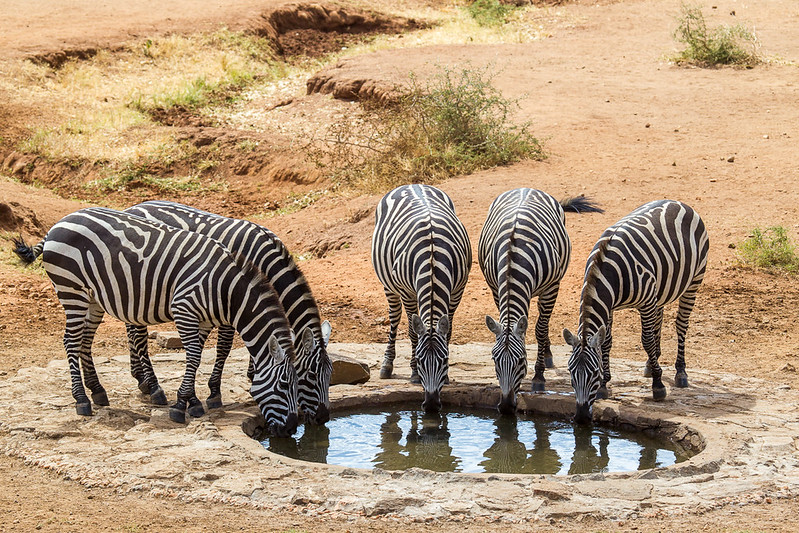- Home
- Uganda
-
-
- Gorilla Trekking Safaris
- 15 Day Gorilla and Chimps Trekking – Big 5 and Nature Sighting Safari
- 10 Day Uganda Wildlife and Primate Safari
- 8 Day Gorillas – Chimps and Big Five Experience
- 7 Days Murchison Falls – Chimpanzee & Gorilla Trekking Safari
- 6 Day Gorilla Trekking and Queen Elizabeth
- 6 Day Gorillas and Lake Mburo Safari
- 5 Day Gorillas and White Water Rafting Safari
- 3 Day Uganda Fly to Bwindi Gorilla Safari
- 3 Days Gorilla Trekking and Batwa Trail experience in Bwindi
- 3 Day Gorillas and Lake Bunyonyi Safari
- Gorilla Trekking Safaris
-
- Wildlife Safaris
- 22 Days Best of Uganda Wilderness Adventure
- 18-Day Exploring Uganda Safari
- 15 Day Uganda – Kenya and Tanzania Safari Holiday
- 14 Day Uganda-Rwanda Wildlife & Primate Safari
- 14 Days Uganda & Kenya Wildlife Safari
- 12 Day Mountain Rwenzori Trekking and Wildlife
- 11 Day Uganda Safari Classic Tour
- 10 Day Best of Uganda Safari
- 7 Day Sipi Falls and Kidepo Valley National Park
- 4 Day Kibale Forest Chimpanzee Tracking
- 3 Day Murchison Falls Vacation Including Big 5 Sighting
- 3 Days Queen Elizabeth Wildlife Safari
- 2 Days White Water Rafting In Jinja
- Wildlife Safaris
-
- Birding & Fishing Tours
- 21 Days Birding Uganda and Gorilla Trekking Safari
- 18 Days Birding Tour with Gorilla Trekking
- 15 Days Uganda Birding Safari
- 10 Day Uganda Fishing Safari with a Boat Cruise Experience
- 10 Day Birding Uganda and Game Drives
- 4 Day Murchison Falls Fishing Safari
- 3 Day Mabamba Shoebill and Botanical Gardens Safari
- Birding & Fishing Tours
-
-
- Rwanda
-
- Kenya
-
- Tanzania
-
-
- Long Safaris
- 15 Day Uganda – Kenya and Tanzania Safari Holiday
- 14-Day Tanzania Wildlife Safari & Pangani Beach Holiday
- 10-Day Safari & Cultural Activity in Kilimanjaro Region
- 9-Day Kilimanjaro Hiking Safari in Tanzania
- 8-Day Honeymoon Package with Zanzibar Experience
- 8-Day Luxurious Tanzania Safari
- 8-Day Tanzania Safari & Beach Holiday
- 6 Day Explore Tanzania Classic Safari
- 6-Day Best of Tanzania Safari Tour
- Long Safaris
-
-
- National Parks
-
-
- Tanzania
- Serengeti National Park
- The Ngorongoro Conservation Area
- Lake Manyara National Park
- Tarangire National Park
- Mount Kilimanjaro National Park
- Arusha National Park
- Gombe National Park
- Ruaha National Park
- Katavi National Park
- Nyerere National Park (Selous)
- Mahale Mountains National Park
- Kitulo National Park
- Mikumi National Park
- Rubondo Island National Park
- Saadani National Park
- Mkomazi National Park
- Udzungwa Mountains National Park
- Tanzania
-
- Blog & Tips
- About Us
- Contact Us
Kidepo Valley National Park
Kidepo Valley National Park
Kidepo Valley National Park at 1,442km2 is a massive semi arid plain stretch of land extreme north east on the boundaries between Uganda and her neighbor countries Kenya and South Sudan. It was gazette a national park in 1962 because of its high quality of and big numbers of wildlife species some not found anywhere else in Uganda.
The park boasts of more than 77 mammal species most notable four out of the Big 5 giant mammals of Africa; Lions, elephants, buffalo and leopard; Take a Uganda safari into this extremely beautiful savannah grassland plain, dotted with almost evenly spaced acacia trees and Borassus palms and meet very colorful mammals with beautiful color patterns; cheetah, zebra, giraffe, and leopard at close range. In this national park blessed with magnificent beauty are more than 425 bird species most outstanding the Ostrich; the largest bird on the planet found nowhere else in Uganda.
Kidepo Valley National Park Overview
This Park is more than 700km away from Kampala; Uganda’s capital city by road and not close to other urban centres; It is one of those virgin places whose outstanding natural beauty, has been less encroached upon by human activity, is less congested and a place where those who love a laidback lifestyle, nature and adventure get true happiness. Kidepo Park ranks highly amongst Africa’s wildest places with pure air; free of all pollutants.
The altitude at the Park rises from 914m at Narus and Kidepo riverbeds to the highest point Morungole 2,750m above sea level; It generally a semi arid flat plain that extends beyond eyes can see and one of those rare places of the wild Africa in which wildlife spotting and nature interpretation is less tiresome.
Note the local communities around the park; a pastoral Karamojong people have lived in the wilderness grazing their big herds of domestic animals mutually alongside wild animals; They have all along depended on their domestic animals for all their basic home needs and have less contact with European civilisation. In some way their cultural and traditional activities support wildlife conservation purposes. Take organised safari into their homesteads Manyatta in a big way of meet face to face with the core of African civilisation in its raw and natural form.
Kidepo Valley National Park at a Glance.
A captivating region of semi-arid savanna, seasonal rivers, and low mountains, Kidepo is situated in the far north-east of Uganda, close to the borders of South Sudan and Kenya. At any time of the year, it is stunning and easily accessible.
The terrain of Kidepo Valley National Park is 1,442km2. The valley floor is 914 meters above sea level, and Mount Morungole’s 2,750-meter peak dominates the horizon.
In the wet season, the Kidepo and Narus rivers flow through the savannah environment, and they vanish in the dry. The most solitary national park in Uganda is Kidepo because of its isolation. The sparse number of visitors has helped to preserve the wilderness’ distinctive atmosphere.
It was cut off for years by various types of fighting, and only recently has it been made accessible by both road and air. Only two lodges and a government rest camp are accessible right now. These two elements have worked together to keep visitor numbers low, along with the park’s relatively hefty entry fee. However, those who succeed are in for a treat, and the enjoyment is further increased by the fact that you are far from civilization and off the beaten path.
The Kidepo Area contains 2 parts attached on it which include the Matheniko Wildlife Reserve and the Bokora Wildlife Reserve. Matheniko Wildlife Reserve is located in the southeast and is also part of the larger Kidepo valley conservation area. Bokora Wildlife Reserve is located in the southwest and it borders Matheniko Wildlife Reserve as well as Pian-Upe Wildlife Reserve. At Kidepo don’t miss out the great views of Mount Morungole.
Key features and attractions of Kidepo Valley National Park:
Diverse Landscape:
The Park boasts a diverse range of landscapes, from vast savannah plains to rugged mountains and deep valleys. The expansive savannahs are studded with rocky outcrops and small hills, creating unique and picturesque scenery.
Wildlife Diversity: (Game Drive).
Kidepo Valley National Park is renowned for its exceptional wildlife diversity, including some species not found in other Ugandan parks. The park is home to numerous mammals, including elephants, lions, leopards, cheetahs, buffaloes, giraffes, zebras, and various antelope species like the Jackson’s hartebeest and Uganda kob. There’s also a healthy population of African wild dogs, making it one of the best places to spot them in East Africa.
Only Queen Elizabeth National Park has more biodiversity than Kidepo, Uganda’s third-largest national park. 77 different mammal species may be found at Kidepo, and there are many of opportunities to see game there. There are 20 different types of predators, including lions, leopards, and spotted hyenas, Aardwolf, cheetah, caracal, bat-eared fox, and black-backed jackal are native to Kidepo in Uganda. The number of elephants has increased to over 650 (from 200 in the middle of the 1990s), the number of buffalo is thought to be over 10,000, and there are over 50 Rothschild’s giraffes, a population that is significant on a global scale.
Both larger and smaller kudu roam the dense woods while zebra graze on the plains. Adventurers in luck might even spot a white-eared Kob, which is more frequently spotted in South Sudan and Ethiopia.
Birdwatching Paradise:
The park is a haven for birdwatchers, as it hosts over 475 bird species, some of which are endemic to the region. Bird enthusiasts can spot ostriches, Kori bustards, Secretary birds, Abyssinian ground hornbills, and various raptors, making it a rewarding experience for ornithologists.
Only in Kidepo can one find Clapperton’s francolins and rose-ringed parakeets in East Africa. There are 56 different raptor species, and the vultures in the area are thriving. In addition, bird aficionados can only see the majestic Common Ostrich at Kidepo in Uganda
Narus Valley:
The Narus Valley is the park’s most accessible and wildlife-rich area. Visitors can take game drives through the valley, encountering a vast array of animals along the way. The valley is particularly famous for its lion prides and large herds of buffaloes and elephants.
Kidepo Valley:
The Kidepo Valley is a rugged and beautiful expanse that offers breathtaking views. The valley is not as frequented by tourists, making it an ideal place for those seeking solitude and a deeper connection with nature.
Cultural Encounters:
Kidepo Valley National Park is surrounded by several communities belonging to the Karamajong ethnic group, known for their rich cultural heritage. Visitors can interact with the local communities, learn about their traditional ways of life, and even witness traditional dances and ceremonies.
Hot Springs:
Within the park, visitors can find the Kanangorok Hot Springs, which is an excellent spot for relaxation and observing the local wildlife that frequently visits the springs for water.
Night Game Drives:
Kidepo Valley National Park is one of the few parks in Uganda that allows night game drives. This unique experience provides an opportunity to witness the park’s nocturnal creatures and observe predator-prey interactions under the moonlit sky.
Activities to at Kidepo Valley National Park.
Game Drives (The Quintessential African Safari experience).
The Valley is famous for the greatest option known to quickly explore the furthest areas of the wild called Apoka game drives. It is an incredible experience to encounter enormous beasts and predators up close while being safe in your car.
Typically, cars take one of two 20-kilometer paths through the abundantly vegetated Narus Valley. Large buffalo herds, thirsty elephants, and antelope are drawn to this area where a little amount of water persists even during the dry season. When herbivores congregate, predators are drawn to them, and you can see a variety of stunning animals as a result.
Game drives leave in the early morning and late afternoon during the hot, dry season. This enables you to watch the animals in their most animated form and record memories within the optimum photo-taking lighting conditions.
Less species can be seen in the drier Kidepo Valley, but it is nevertheless well worth seeing because of its untamed beauty. Focus on the Kanangorok hot springs, which are located 30 kilometers north of Apoka, but avoid becoming naive. Drive gently, meandering past plains flanked by mountains and across the Kidepo River, which in the dry season has a vast sand bank. Ostrich and secretary birds thrive here, and kudu benefit from the heavier bush’s shelter.
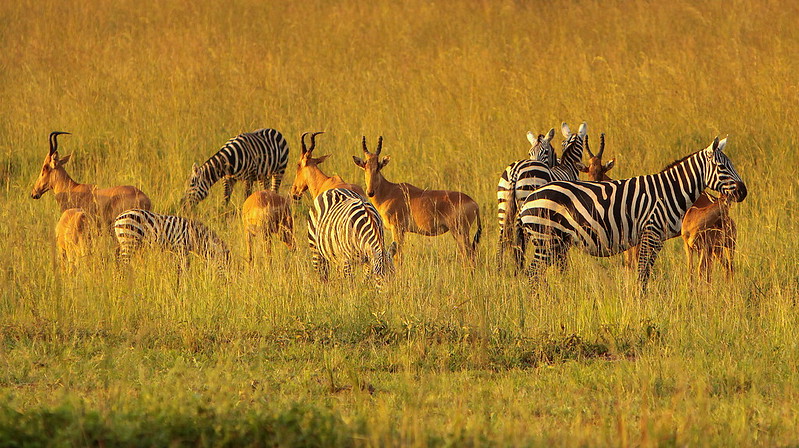
Wildlife & Nature Walks (Step into the Wild Savannah for a Clear Look).
Observe the feeling of vulnerability that permeates every walk when you head out onto a trail. Assuaged by your guide’s wisdom, you may experience the wilderness in its entire splendor.
The majority of the two- to three-hour walking routes wind through the Narus Valley. Given that the short (5 km) radius makes it comfortable for most tourists, the Narus Valley stroll is particularly well-liked. It provides you with plenty of chances to witness a wide variety of gorgeous creatures and birds against the backdrop of an incredible scenery.
In search of the Abyssinian Roller, Purple Heron, Abyssinian Ground Hornbill, and Clapperton’s Francolin, which is exclusively seen in Kidepo, birders frequently scour the edges of the Narus and Namamukweny Valleys.
A 15-kilometer route that follows the ridge line into the hills is available for those seeking a more difficult challenge. There are a lot of potential trails, however some may not have been used in a while and may even be temporarily closed.
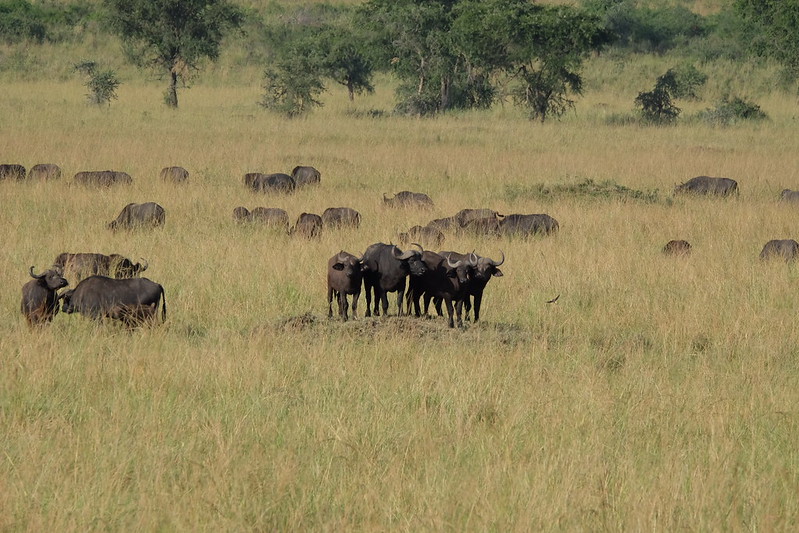
Karamojong People Cultural Encounters.
The Karamojong are a Nilotic language-speaking ethnic group of nomadic agro-pastoralists who love cattle and came from Ethiopia more than 500 years ago into what is now north-eastern Uganda. The Karamojong, like their compatriots in northern Kenya and south-western Ethiopia, have mainly resisted modernization (although that is starting to change) and continue to lead traditional lives that haven’t changed much since their initial arrival.
Conflict has always been a feature of Karamojong culture as a result of the community’s love of cattle, which has led to disagreements over animals. Assault guns became commonly available after the demise of the Amin administration, briefly closing the area off to outsiders, giving this a more menacing edge. However, since Joseph Kony and the Lord’s Resistance Army left northern Uganda in 2005 and the Ugandan government de-militarized Karamoja in 2011, the region is now both secure to explore and hospitable to tourists.
The Dodoth Karamojong were deprived of their usual grazing and hunting grounds because of the park. Therefore, it is not only important to travel responsibly and interesting to visit the Karamojong to learn about their culture. This guarantees that the Karamojong will gain from tourism directly.
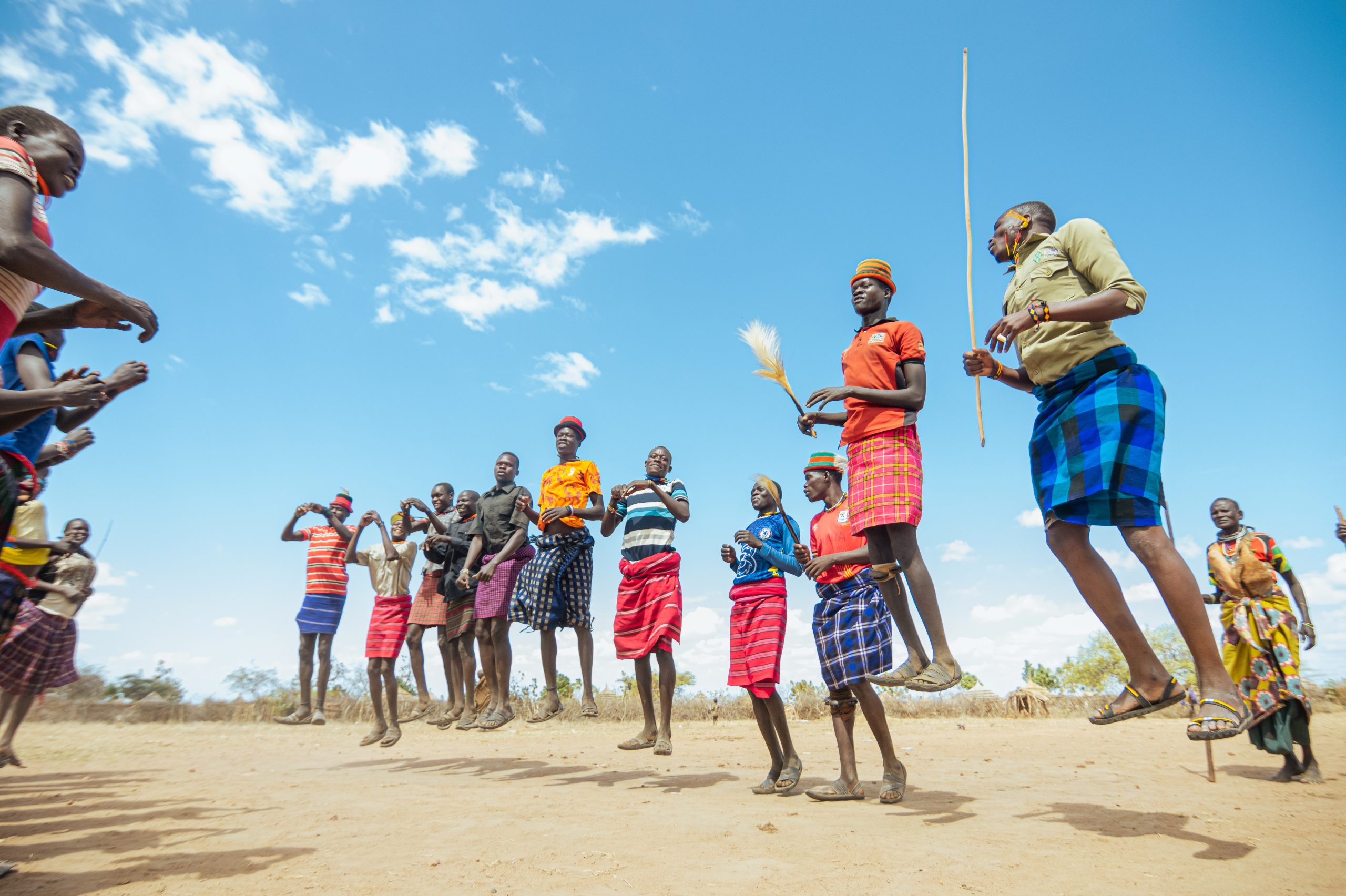
The Ik People Treks.
The establishment of the park caused the Ik people the most harm. The Ik were formerly pastoralists who lost their cattle to invaders from the Karamojong, Turkana, and Pokot tribes. The Ik are believed to have been the first migrants from Ethiopia. They were expelled from the park in 1962 after reverting to a hunter-gatherer way of life on the lower slopes of the Morungole Mountains. These people had little choice except to try subsistence farming in the highlands outside of the park, far up.
The movement, which coincided with a period of widespread starvation known as “the time of one cup,” drove the Ik to the brink of extinction, tested long-standing societal norms, and transformed them into a shadow of their former selves. The anthropologist Colin Turnbull spent three years living with the Ik at this time in the 1960s, documenting the collapse of their society and the horrifying extents to which group members resorted to self-interest. He wrote about it in the book “The Mountain People,” which at the time of its release sparked uproar.
Turnbull was partially aware that the Ik’s exile from the park may have contributed to some of his interactions with them, but he was unaware of the full extent of the trauma.
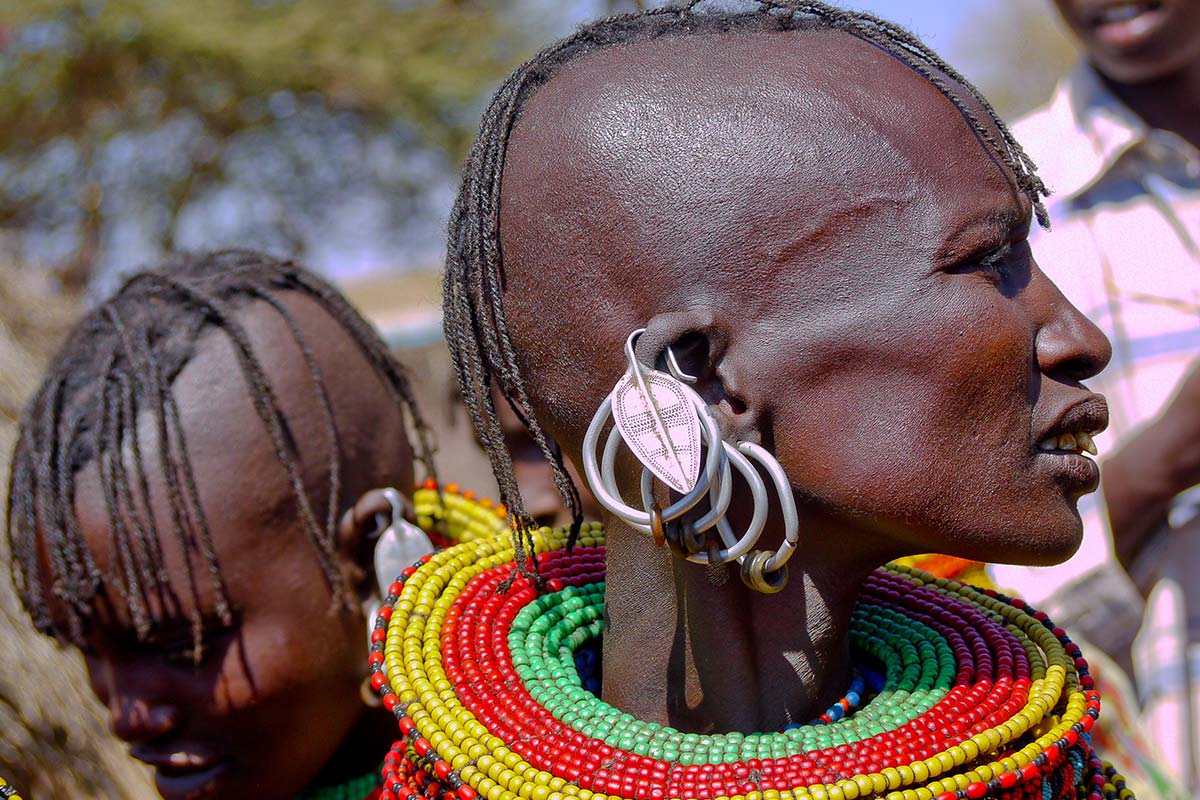
When to Visit Kidepo Valley NP.
Kidepo is known for its stunning scenery, abundant wildlife, and unique cultural experiences; To determine the best time to visit Kidepo, it’s essential to consider the park’s weather patterns and the type of experience you prefer.
The park experiences two primary seasons:
Dry Season (December to February and June to September):
The dry season is considered the best time to visit Kidepo Valley National Park. During these months, the weather is typically dry, and the vegetation is less dense, making it easier to spot wildlife. Moreover, the dry conditions force animals to gather around water sources, enhancing your chances of seeing a wide variety of wildlife, including lions, elephants, giraffes, and more.
Wet Season (March to May and October to November):
The wet season brings rain and can make some areas of the park inaccessible due to muddy roads and flooding. Wildlife disperses more during this period as there is an abundance of water throughout the park, making it more challenging to spot them. However, the wet season also results in lush greenery and a vibrant landscape, which some visitors find equally appealing.
Ultimately, the best time to visit Kidepo depends on your personal preferences. If you prioritize wildlife viewing and easier travel conditions, consider planning your trip during the dry season. On the other hand, if you appreciate the lush beauty of a green landscape and don’t mind the possibility of encountering some rain, the wet season might suit you.
Getting to Kidepo National Park.
Due to its remote location, getting to Kidepo Valley National Park can be a bit challenging. The park is usually accessed by air through chartered flights from Entebbe International Airport or by road, which may take around 10-12 hours from Kampala, Uganda’s capital. Kidepo can be reached by 2 modes of transportation either by road or air.
By road.
Most tourists arrive by car, which on a sealed route takes no more than seven hours from Murchison Falls. Some travelers decide to take a break from the adventure by staying the night close to Sipi Falls. Kidepo is 571 kilometers away from Kampala. Few people take the arduous 10-hour drive through Gulu and Kitgum from Kampala because it is so long and difficult depending on the weather of the day when rainy, it’s a bit hard but in sunny times its ease hence a great safari.
By Air.
A few light aircraft firms that fly into the airport nearby Apoka serve Kidepo. These flights are expensive for couples or small groups traveling alone because they only operate on specific days and require a minimum number of passengers, but they are not too pricey for families or bigger groups. But don’t let that deter you—there is something quite magical about taking off from Entebbe and circling over the dramatic Murchison Falls before continuing on to the vast Kidepo.
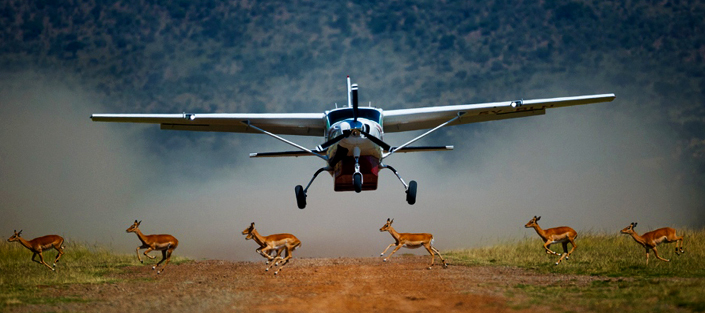
Accommodation at Kidepo Valley National Park.
There are quite good numbers of cozy accommodation facilities in Kidepo but the most iconic are;
Kidepo Savannah lodge.
There are only two modest tourist lodges in Kidepo. A straightforward but cozy lodge, Kidepo Savannah Lodge is situated 500 meters from Kidepo’s Kalokudo Gate.
Eight self-contained “safari tents” and nine “tents” that share an ablution block branch off of a central eating room and bar with all wines and drinks for the best time in the park
Visitors can enjoy fantastic views of the Narus Valley and the surrounding mountains from this location.
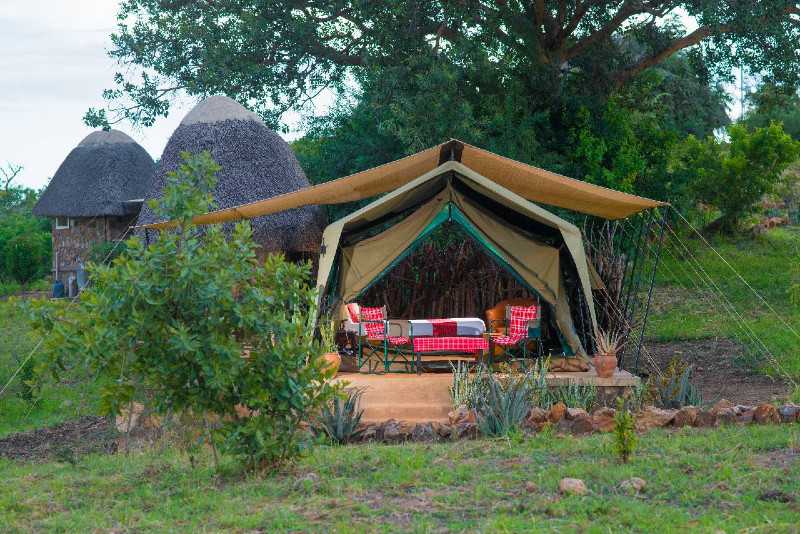
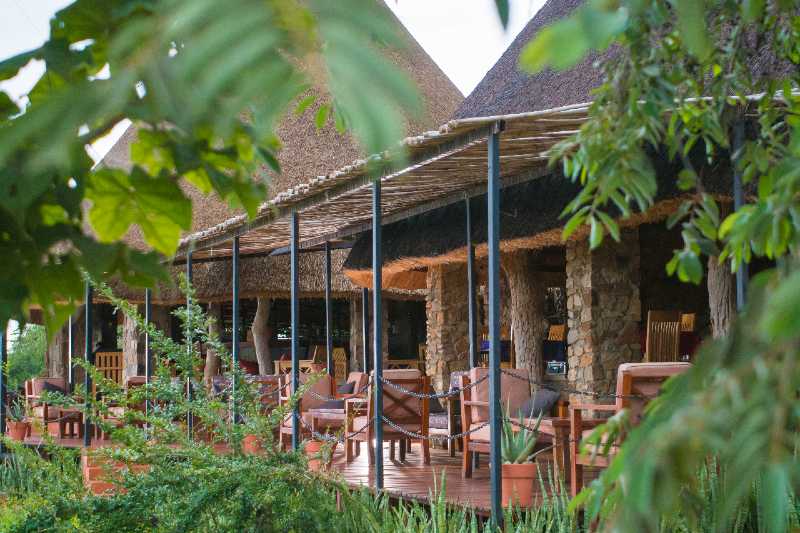
Apoka Safari lodge.
The luxurious Apoka Safari Lodge is well situated on a slight hill in the center of the plains. There is wildlife all everywhere. You are in a great position to admire the wilderness in all its splendor, whether you see zebra or buffalo right outside your room when the grass is lush or lion relaxing by the pool in the dry months.
Ten roomy bandas constructed of thatch, canvas, and wood offer cozy lodging. The eating area and bar are wonderful, with a thatch-roofed area and a high platform that is ideal for observing wildlife. There is a tall observation tower as well, which serves as an unforgettable place to have a private breakfast.
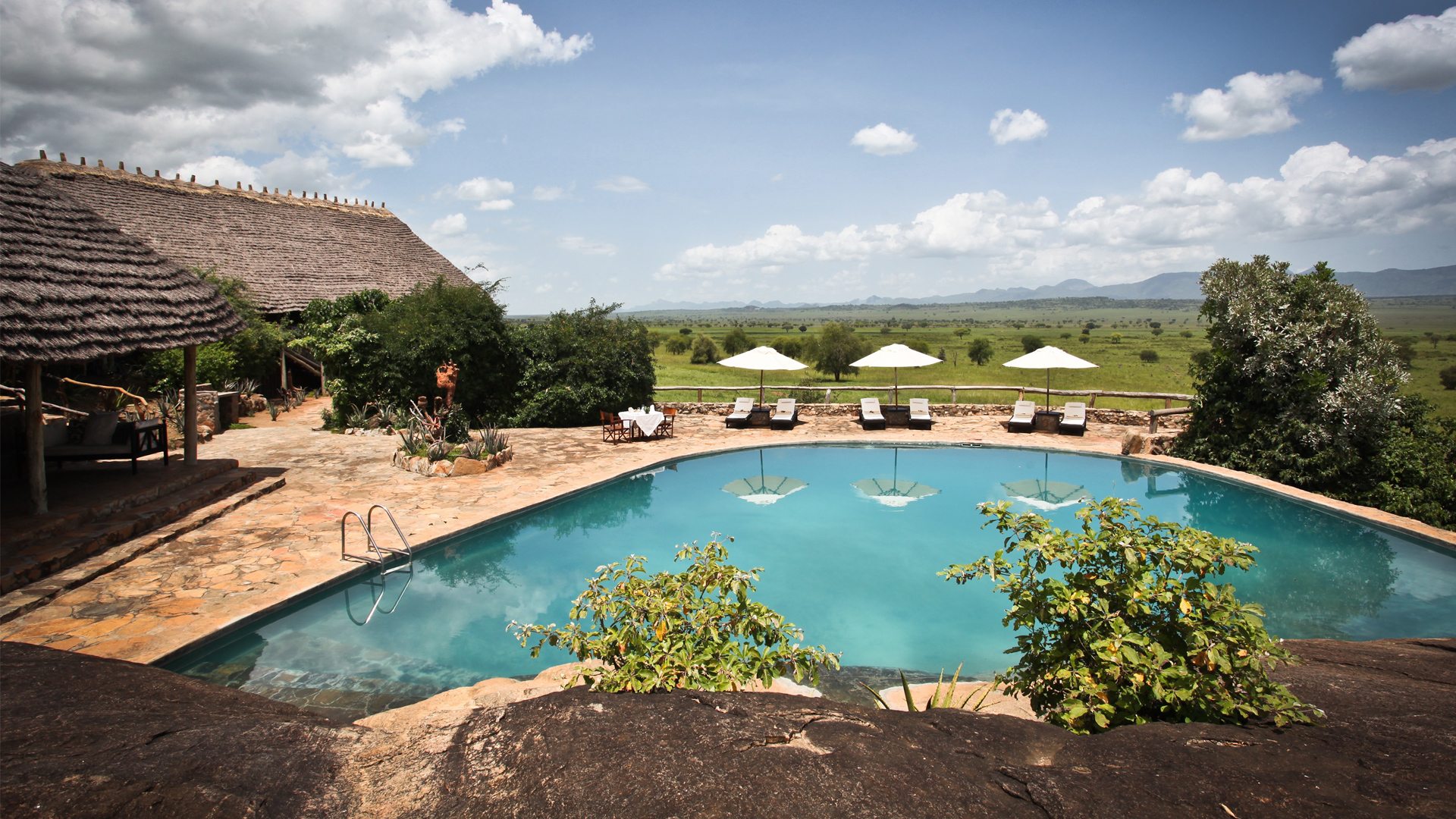

Geography and Geology of Kidepo Valley NP
Kidepo Valley National Park is a renowned national park located in the northeastern part of Uganda, near the border with South Sudan. It’s considered one of the most remote and rugged national parks in Uganda, known for its breathtaking landscapes, diverse wildlife, and rich cultural heritage. Let’s delve into the geography and geology of Kidepo Valley National Park:
Geography:
Location: Kidepo Valley National Park is situated in the Karamoja region of northeastern Uganda. It covers an area of approximately 1,442 square kilometers.
Landscape: The Park’s landscape is characterized by vast savannah grasslands, rugged hills, and valleys. It is surrounded by the Morungole Mountains to the south, the Napore-Nyangea Mountain Range to the north, and the Kidepo Valley to the west.
Rivers: The Narus River and the Kidepo River flow through the park, creating vital water sources for both wildlife and vegetation. These rivers also play a crucial role in shaping the park’s ecosystem.
Wildlife: Kidepo Valley National Park is home to a wide variety of wildlife species, including lions, elephants, giraffes, zebras, cheetahs, leopards, and more. The park’s isolation has allowed it to retain a high degree of biodiversity.
Cultural Diversity: The park is located in an area with a rich cultural heritage. The local communities, including the Karamojong people, have inhabited the region for centuries, and their traditional practices and way of life are closely tied to the natural environment.
Geology:
Rock Formations: The park’s geology is characterized by various rock formations, including sandstones, limestone, and shale. These rock formations have been shaped by natural processes over millions of years.
Mountains and Valleys: The Morungole Mountains to the south and the Napore-Nyangea Mountain Range to the north are part of the East African Rift System, a tectonic boundary where the African Plate is slowly splitting apart. This geological activity has contributed to the formation of the valleys, mountains, and escarpments in the area.
Volcanic Activity: The region’s geology also includes evidence of volcanic activity. The presence of volcanic rocks in the park suggests that the area has experienced volcanic eruptions in the distant past.
Sedimentary Deposits: The Park’s landscape has been shaped by sedimentary processes over time, including erosion and deposition. The river valleys and erosion patterns have contributed to the creation of the diverse terrain seen in the park today.
In summary, Kidepo Valley National Park’s geography and geology are intertwined, creating a unique and diverse ecosystem. The combination of rugged landscapes, diverse wildlife, and cultural significance makes it a remarkable destination for both nature enthusiasts and those interested in cultural exploration.
Conservation Measures and Challenges at Kidepo Valley NP.
Conservation Measures at Kidepo Valley National Park:
Protected Area Status: Kidepo Valley National Park was established as a protected area to conserve its unique biodiversity, landscapes, and cultural heritage. Its protected status ensures that activities such as poaching, illegal logging, and habitat destruction are strictly regulated.
Community Engagement: Involving local communities in conservation efforts is crucial. Collaborative programs that include local communities in park management, ecotourism, and sustainable resource use can help reduce negative human-wildlife interactions and promote conservation awareness.
Anti-Poaching Initiatives: Poaching poses a significant threat to the park’s wildlife. Enhanced anti-poaching patrols, training of rangers, and the use of technology such as drones and camera traps can help deter poaching activities and protect vulnerable species.
Tourism Development: Well-managed and sustainable tourism can provide financial support for conservation efforts. Ecotourism initiatives can generate revenue while promoting the value of conserving biodiversity and habitats.
Research and Monitoring: Regular monitoring of wildlife populations, habitats, and ecosystem health provides valuable data for making informed conservation decisions. Research helps understand species’ behaviors, migration patterns, and other ecological aspects, aiding in effective management.
Challenges at Kidepo Valley National Park:
Poaching and Illegal Wildlife Trade: Poaching for ivory, bushmeat, and other wildlife products remains a significant challenge. This threatens the park’s iconic species such as elephants and rhinos.
Human-Wildlife Conflict: As human populations expand around the park, conflicts between local communities and wildlife, such as crop raiding by elephants or predation on livestock, can lead to negative attitudes towards conservation.
Limited Resources: Insufficient funding and resources can hinder effective park management, including anti-poaching efforts, infrastructure maintenance, and community engagement programs.
Infrastructure and Accessibility: The park’s remote location and lack of proper infrastructure make it difficult to manage and develop sustainable tourism. Accessibility issues can limit the potential benefits of tourism for both conservation and local communities.
Cultural and Livelihood Conflicts: Balancing conservation goals with the cultural practices and livelihoods of local communities can be challenging. Traditional land use practices, such as grazing and agriculture, may come into conflict with conservation objectives.
Climate Change: Changing climate patterns can affect the park’s ecosystems, water availability, and wildlife behavior. This may lead to shifts in habitats and food sources, potentially impacting species survival.
Political Instability: The Park’s proximity to borders with neighboring countries, such as South Sudan, can expose it to potential security risks and impacts from regional conflicts.
Addressing these challenges requires a multi-faceted approach that involves collaboration between government agencies, non-governmental organizations, local communities, and international partners; By implementing effective conservation measures and addressing challenges, Kidepo Valley National Park can continue to thrive as a vital refuge for biodiversity and cultural heritage
What to Pack for Kidepo Valley National Park.
Packing for a trip to Kidepo Valley National Park requires careful consideration of the park’s remote location, diverse activities, and varying weather conditions. Here’s a list of items to pack for a comfortable and enjoyable visit:
Clothing:
- Lightweight and breathable clothing for warm weather during the day.
- Long-sleeved shirts and pants to protect against the sun and insects.
- Warm clothing for cooler evenings and early mornings, as temperatures can drop.
- Rain jacket or poncho for unexpected rain showers.
- Comfortable and sturdy hiking boots for exploring the park’s rugged terrain.
- Hat or cap for sun protection.
- Swimsuit if you plan to swim in designated areas.
Outdoor Gear:
- Binoculars for wildlife and bird watching.
- Camera with extra batteries and memory cards to capture the park’s beauty.
- Daypack for carrying essentials during hikes and safaris.
- Trekking poles, if needed, for extra stability on trails.
- Insect repellent to protect against mosquitoes and other insects.
- Sunscreen with a high SPF to shield your skin from the sun’s rays.
- Sunglasses with UV protection.
Health and Safety:
- Personal medications and a small first aid kit.
- Prescription eyewear and spare contact lenses if applicable.
- Basic over-the-counter medications (pain relievers, antidiarrheals, etc.).
- Hand sanitizer and wet wipes for personal hygiene.
- Personal identification, travel insurance documents, and emergency contact information.
Camping and Accommodation:
- If you plan to camp, bring a suitable tent, sleeping bag, and camping gear.
- If staying in lodges or accommodations, check with the establishment about bedding and amenities provided.
Electronics:
- Travel adapter and chargers for your electronic devices.
- Portable power bank to keep your devices charged, as electricity might be limited in some areas.
Miscellaneous:
- Reusable water bottle to stay hydrated. Consider water purification tablets or a filtering system.
- Snacks for energy during hikes and safaris.
- Travel towel that dries quickly and takes up less space.
- Local currency and a small amount of cash for any unexpected expenses.
Respect for Local Culture:
- Modest clothing for visits to local communities, as a sign of respect for their cultural norms.
Keep in mind that the key to a successful trip is packing light while ensuring you have everything you need to stay comfortable and safe. Research the specific activities you plan to undertake at the park to tailor your packing list accordingly. Lastly, adhere to the park’s guidelines and regulations to minimize your impact on the environment and contribute to responsible tourism.
Remarks on Kidepo Valley National Park
Overall, Kidepo Valley National Park offers a remarkable and off-the-beaten-path safari experience, characterized by its pristine wilderness, abundant wildlife, and cultural richness. It is a destination that truly showcases the raw and unspoiled beauty of East Africa’s natural treasures.
